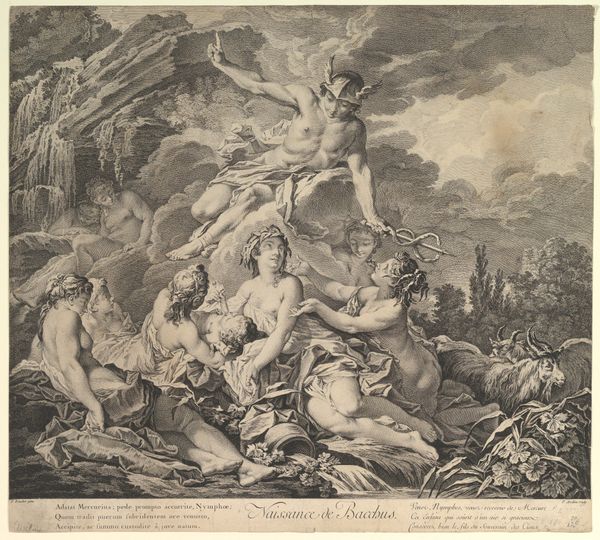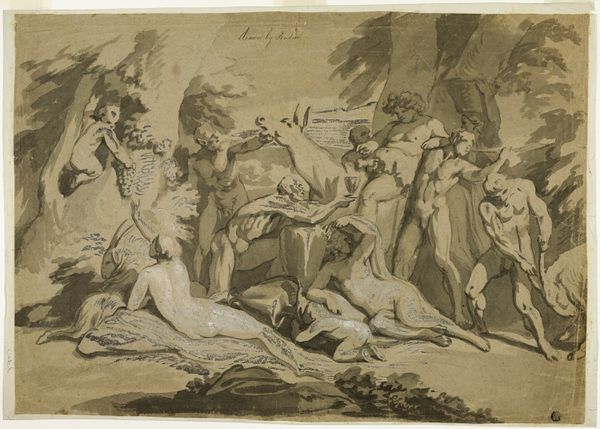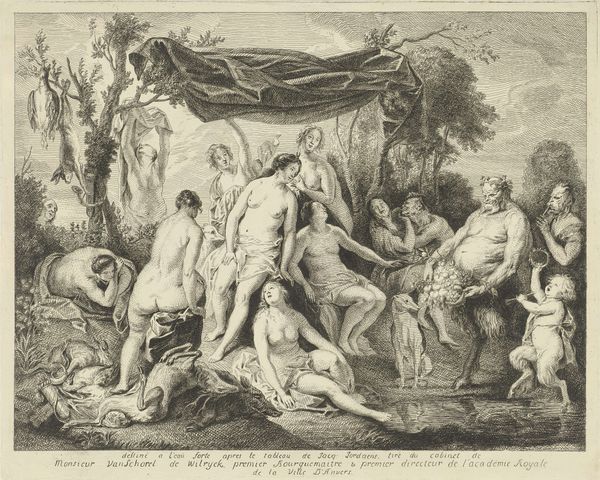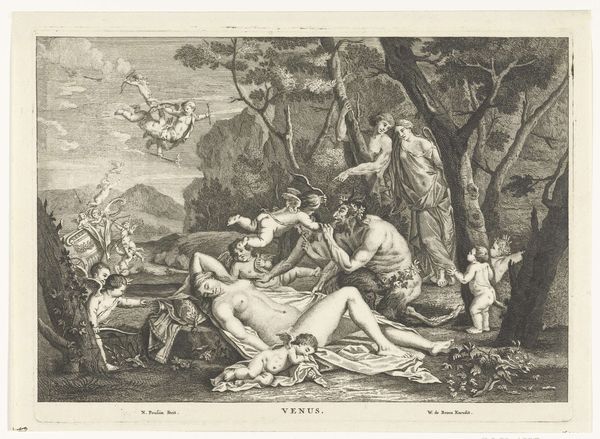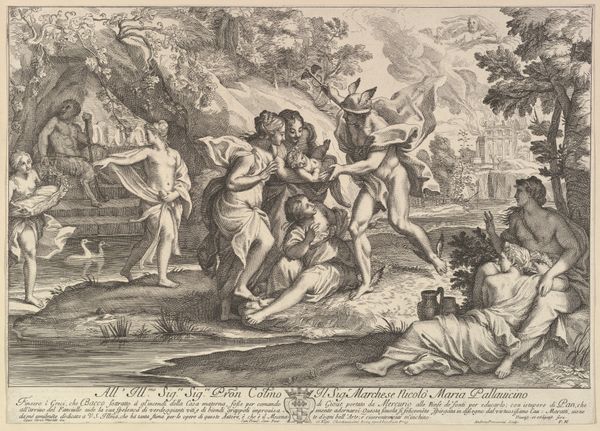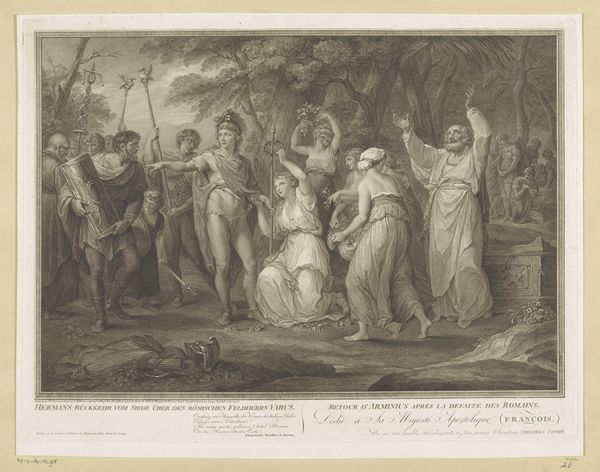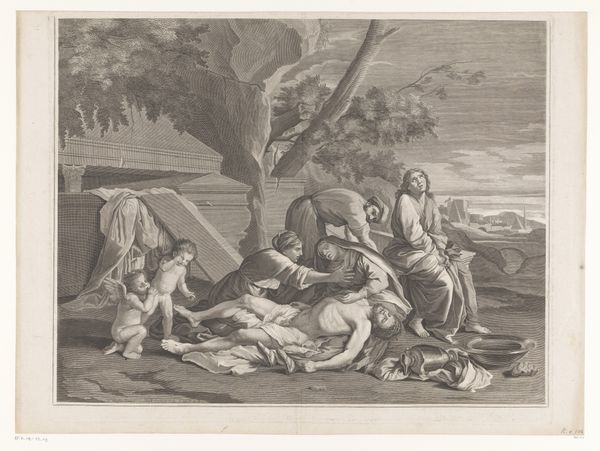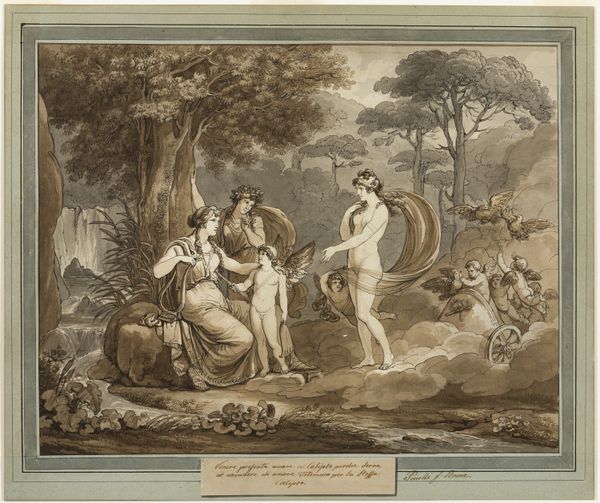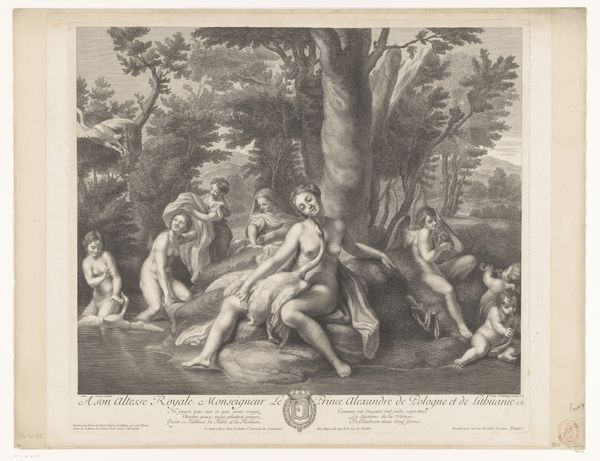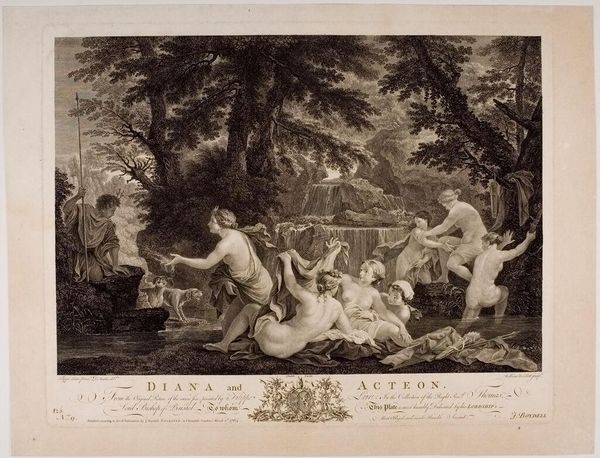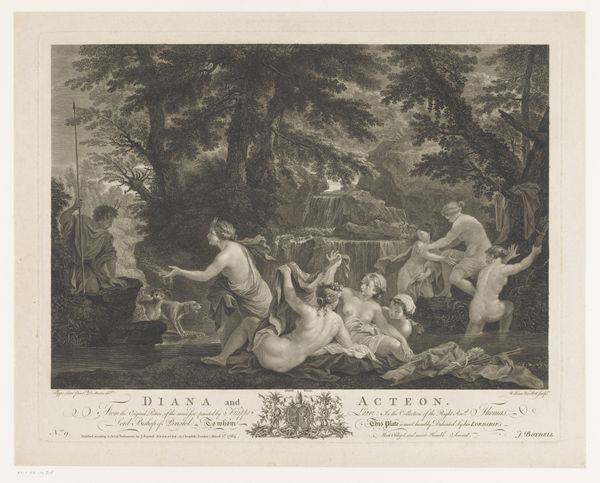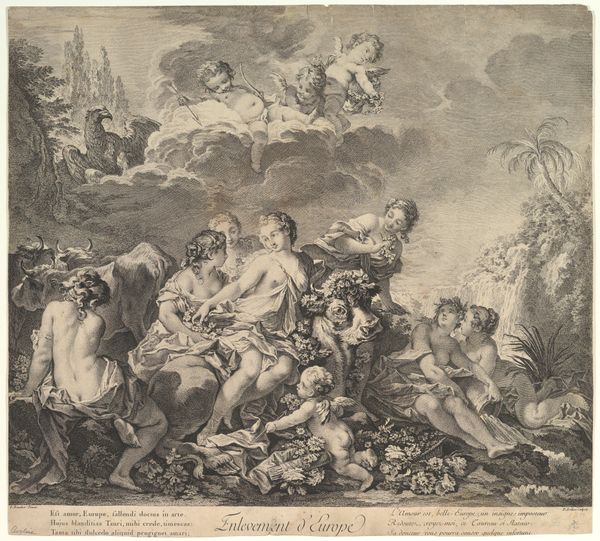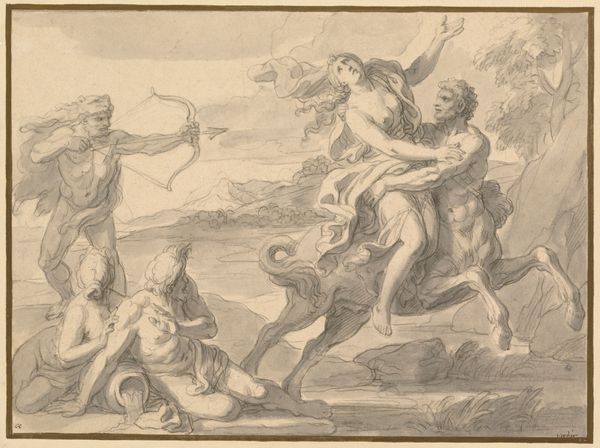
Cupid Advises Calypso to Set Fire to Mentor’s Ship, from The Adventures of Telemachus, Book 7 1808
0:00
0:00
drawing, print, paper, ink, charcoal
#
drawing
#
narrative-art
#
neoclassicism
# print
#
landscape
#
classical-realism
#
charcoal drawing
#
figuration
#
paper
#
ink
#
charcoal
#
history-painting
Dimensions: 456 × 580 mm (sight); 558 × 665 mm (overall)
Copyright: Public Domain
Curator: Look at this drawing, executed in charcoal and ink, by Bartolomeo Pinelli in 1808. It’s called "Cupid Advises Calypso to Set Fire to Mentor’s Ship," part of his illustrations for *The Adventures of Telemachus*. It depicts a dramatic scene of vengeful destruction. Editor: Vengeful is right. There's a frenzy in those figures! They move with such passion, like maenads in a bacchanal. I’m immediately struck by the chaotic energy contrasted by the classically rendered figures. It's quite unsettling. Curator: Pinelli was working in a Neoclassical style, appropriating idealized forms from antiquity, but he also tapped into a primal narrative of thwarted desire and the rage that can ignite when love goes awry. Editor: The tale itself is steeped in political undertones; *The Adventures of Telemachus* was, after all, read as a critique of Louis XIV's court, where Mentor's wisdom opposes unchecked power. I wonder, how would the early 19th-century viewers interpret Calypso's rage? Was it a comment on female agency, or another reinforcement of the dangers of female ambition unbound by reason? Curator: Interesting question! I see Calypso and her nymphs, with Cupid practically frolicking amongst them, as potent visual signifiers for powerful passions taking hold of social order, or, perhaps, a critique of Mentor's authority. Observe the visual weight placed upon the goddesses versus the rather roughly sketched and distant vessel. What feelings did the artist want to instill? Editor: Precisely. The act of setting fire, then and now, isn't just about destruction, but of reshaping the political sphere— violently wrenching society towards another potential path. Was Pinelli aware that he captured not merely a classic tale of lore but a reflection of the Napoleonic wars he was embedded within? Curator: It's plausible. Pinelli created this around 1808, a period ripe with upheaval. So, while ostensibly illustrating a Greek myth, this work participates in dialogues on governance, gender, and revolution, even if veiled behind classicism. Editor: Exactly. It proves that every piece—from grand paintings to these small illustrations—contains layers of intention and interpretation woven into our society’s fabric. Curator: I find that deeply resonant. A small drawing, yet an inexhaustible spring of ideas, feelings, history.
Comments
No comments
Be the first to comment and join the conversation on the ultimate creative platform.
